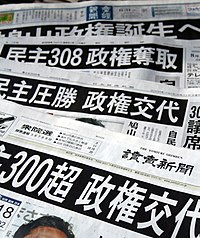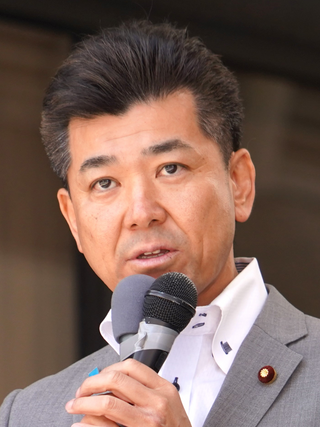| Incumbents | | Party |
|---|
| Norihiko Akagi | Former Agriculture, Forestry and Fisheries Minister | Liberal Democratic Party (LDP) |
| Tetsuma Esaki | Former Senior Vice Minister of Land, Infrastructure and Transport | Liberal Democratic Party (LDP) |
| Takashi Fukaya | Former International Trade and Industry Minister | Liberal Democratic Party (LDP) |
| Hajime Funada | Former Minister of Economic Planning Agency | Liberal Democratic Party (LDP) |
| Tetsuzo Fuyushiba | Minister of Land, Infrastructure and Transportation Minister | New Komeito Party (NKP) |
| Yoshiaki Harada | Foreign Affairs Committee Chair | Liberal Democratic Party (LDP) |
| Mitsuo Horiuchi | Former International Trade and Industry Minister | Liberal Democratic Party (LDP) |
| Yamato Inaba | Agricultural Committee Chair | Liberal Democratic Party (LDP) |
| Kiichi Inoue | Disaster Management Minister | Liberal Democratic Party (LDP) |
| Gaku Ishizaki | Former Senior Vice-Minister of Internal Affairs and Communications | Liberal Democratic Party (LDP) |
| Kosuke Ito | Committee on Fundamental National Policies Chairman | Liberal Democratic Party (LDP) |
| Shintaro Ito | Senior Vice-Minister of Foreign Affairs | Liberal Democratic Party (LDP) |
| Tatsuya Ito | Former Minister in charge of Financial Affairs | Liberal Democratic Party (LDP) |
| Yukio Jitsukawa | Former Senior Vice Minister of Justice | Liberal Democratic Party (LDP) |
| Toshiki Kaifu | Former Prime Minister of Japan | Liberal Democratic Party (LDP) |
| Yōko Kamikawa | Minister of State for Gender Equality and Social Affairs of Japan | Liberal Democratic Party (LDP) |
| Kazuo Kitagawa | Former Land, Infrastructure and Transportation Minister | New Komeito Party (NKP) |
| Tomokatsu Kitagawa | Parliamentary Secretary of the Environment | Liberal Democratic Party (LDP) |
| Kenji Kosaka | Former Education, Culture, Sports, Science and Technology Minister | Liberal Democratic Party (LDP) |
| Saburo Komoto | Senior Vice Minister of Education, Culture, Sports, Science and Technology | Liberal Democratic Party (LDP) |
| Fumio Kyuma | Former Defence Minister | Liberal Democratic Party (LDP) |
| Kenichi Mizuno | Former Senior Vice-Minister of Justice | Liberal Democratic Party (LDP) |
| Nobuhide Minorikawa | Parliamentary Vice-Minister for Foreign Affairs | Liberal Democratic Party (LDP) |
| Yoichi Miyazawa | Senior Vice-Minister of Cabinet Office | Liberal Democratic Party (LDP) |
| Shōichi Nakagawa | Former Treasury Minister | Liberal Democratic Party (LDP) |
| Taro Nakayama | Former Foreign Minister | Liberal Democratic Party (LDP) |
| Kyoko Nishikawa | Former Senior Vice-Minister of Health, Labour and Welfare | Liberal Democratic Party (LDP) |
| Kosaburo Nishime | Parliamentary Secretary of Land, Infrastructure, Transport and Tourism | Liberal Democratic Party (LDP) |
| Yuya Niwa | Former Health, Labour and Welfare Minister | Liberal Democratic Party (LDP) |
| Koji Omi | Former Treasury Minister | Liberal Democratic Party (LDP) |
| Akihiro Ota | Chief Representative of New Komeito | New Komeito Party (NKP) |
| Seiichi Ota | Agriculture, Forestry and Fisheries Minister | Liberal Democratic Party (LDP) |
| Toshitsugu Saito | Former Defence Minister | Liberal Democratic Party (LDP) |
| Takashi Sasagawa | Former General Council Chairman of LDP | Liberal Democratic Party (LDP) |
| Yoshinobu Shimamura | Former Agriculture, Forestry and Fisheries Minister | Liberal Democratic Party (LDP) |
| Junji Suzuki | Former Vice-Minister for Internal Affairs and Communications | Liberal Democratic Party (LDP) |
| Shunichi Suzuki | Former Minister of Environment Agency | Liberal Democratic Party (LDP) |
| Seiken Sugiura | Former Minister of Justice | Liberal Democratic Party (LDP) |
| Minoru Terada | Former Parliamentary Defense Secretary | Liberal Democratic Party (LDP) |
| Tōru Toida | Former Parliamentary Health Secretary | Liberal Democratic Party (LDP) |
| Kisaburo Tokai | Former Minister of Education, Culture, Sports, Science and Technology | Liberal Democratic Party (LDP) |
| Tamisuke Watanuki | President of the People's New Party, Former Speaker of the House of Representatives | People's New Party (PNP) |
| Akihiko Yamamoto | Former Senior Vice Minister of Cabinet Office | Liberal Democratic Party |
| Akiko Yamanaka | Vice-Minister of Foreign Affairs | Liberal Democratic Party (LDP) |
| Taku Yamasaki | Former Vice President of LDP | Liberal Democratic Party (LDP) |
| Hakuo Yanagisawa | Former Health, Labour and Welfare Minister | Liberal Democratic Party (LDP) |
| Okiharu Yasuoka | Former Minister of Justice | Liberal Democratic Party (LDP) |
| Yoshio Yatsu | Former Agriculture, Forestry and Fisheries Minister | Liberal Democratic Party (LDP) |




























